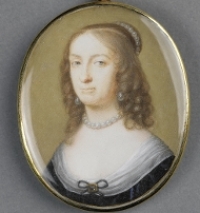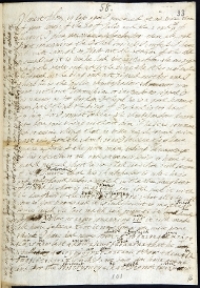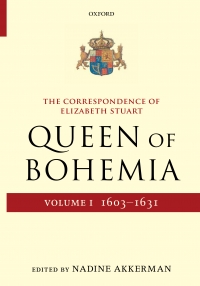Recently published: Encoded correspondence - edited by Nadine Akkerman
Coming four years after part II, and totalling more than one thousand pages, the long awaited first part of the Correspondence of Elizabeth Stuart (1596–1662), daughter of James I, King of England and Scotland has been published.

|
|
|
Nadine Akkerman from Leiden University managed to crack seven different codes in the letters from the 'Winter Queen' with the help of a Rubicon grant.
Surprisingly, most of the letters of 'Winter Queen' Elizabeth Stuart are about war, negotiations, battlefields and political manoeuvres. In Bohemia, Elizabeth Stuart lived between the Catholic and reformed states until the start of the Thirty Years' War. After a single winter's reign as Queen of Bohemia, she fled with her husband Frederick V, Elector Palatine, to The Hague, where they were welcomed due to their family connection with the House of Orange-Nassau. Stuart was known as a somewhat superficial woman who was interested only in theatre, monkeys and dogs. 'I wanted to know to what extent that picture was true', says Akkerman.
War and negotiations

|
She quickly discovered, however, that Stuart's reputation was not supported by the facts. 'I found a total of about 2500 letters to and from her, in 47 different archives, libraries and private collections. In all of these letters she speaks just once about the theatre. All of the other letters are about war, negotiations, battlefields and political manoeuvres.'
Cipher codes unravelled
From 1620 onwards, Stuart used cipher codes to encrypt all of her letters, codes that have never previously been examined. 'With the Rubicon grant I managed to crack seven of these codes so that I could read the encoded correspondence.' These codes can consist of hieroglyphics, numbers, or substituted letters. 'I sought the meaning using the context. Sometimes the sender made an error in the coding or in some cases the recipient had written the decoding between the lines.' The rest was simply a matter of persistent puzzle-solving.
War queen
 |
Sixty-five of the letters collected by Akkerman have never previously been published. In the three-part edition, Akkerman will have annotated all of the letters, and where necessary have had them translated from the original French, German, Italian, Dutch or Latin into English, allowing them to be published as a coherent entity. 'If you read through all of her correspondence, you gain a completely different picture of the woman', she says. 'In this first part you see how she grows up and how she increasingly rebels against her father and her brother, Charles I. While her father and her brother wanted to negotiate with their enemies, Elizabeth was far more in favour of waging war to force peace. She was in fact a war queen.' The final product, a three-volume edition, will function as the definitive source for researchers who wish to break new ground, not just concerning Elizabeth Stuart, but also the role of women in the 17th century, the development of language in that period, the political history of the Netherlands in an international context, the Eighty Years' War, the Thirty Years' War and the English Civil War.
Clear distinction between parts
The first part of the three-volume book series contains 588 letters from Elizabeth's childhood to the moment that her husband died. The second part figures Elizabeth, now a widow, trying hard to maintain her position in The Hague and to regain the lost lands for her children. Akkerman had already published those letters in the second part of the collected correspondence in 2011, as these were related to her PhD research.
More information
The Correspondence of Elizabeth Stuart, Queen of Bohemia, Volume I, edited by Nadine Akkerman, ISBN 978-0-19-955107-1.
Read the introduction with Akkerman's initial conclusions based on this exchange of letters from the period 1603-1631.
Source: NWO
